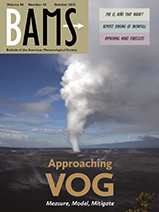TR32 Conference
Terrestrial Systems Research: Monitoring, Prediction and High Performance Computing
April 3rd – April 6th 2018
Venue: University Bonn
Workshop on Data Assimilation in Terrestrial Systems

September 19th-21st, 2016
Organized by: DAFOH, HEPEX, FOR2131 and TR32
The workshop will provide a platform for scientific exchange among researchers working on data assimilation methods and applications in terrestrial systems. Topics to be discussed are the development, improvement and evaluation of methodologies both in synthetic and real-world studies, and operational applications of data assimilation including real-time forecasting, control and management.
We invite participants interested in data assimilation developments and applications for the subsurface, land surface, and the atmosphere with the goal to analyze and/or predicts terrestrial water and heat energy cycles, rainfall-runoff processes, and biogeochemical cycles. Studies which involve multiple compartments of the terrestrial system are particularly welcome.
Bulletin of the AMS

 Monitoring and Modeling the Terrestrial System from Pores to Catchments - the Transregional Collaborative Research Center on Patterns in the Soil-Vegetation-Atmosphere System
Monitoring and Modeling the Terrestrial System from Pores to Catchments - the Transregional Collaborative Research Center on Patterns in the Soil-Vegetation-Atmosphere System
Simmer, C., I. Thiele-Eich, M. Masbou, W. Amelung, S. Crewell, B. Diekkrueger, F. Ewert, H.-J. Hendricks Franssen, A. J. Huisman, A. Kemna, N. Klitzsch; S. Kollet, M. Langensiepen, U. Loehnert, M. Rahman, U. Rascher, K. Schneider, J. Schween, Y. Shao, P. Shrestha, M. Stiebler, M. Sulis, J. Vanderborght, H. Vereecken, J. van der Kruk, T. Zerenner, and G. Waldhoff, 2014
In print in Bulletin of the American Meteorological Society, 96, 1765–1787.
FLEX

ESA selects Fluorescence satellite for vegetation monitoring for its Earth Explorer 8 mission – Scientists from Jülich and the Transregio TR-32 fundamentally involved in the preparation of this mission
The European Space Agency has just announced that the next Earth Explorer (EE8) will be the FLEX satellite (link to press release of ESA and FZJ). FLEX (FLuoresence Explorer) will measure the red and far-red fluorescence signal that is emitted by photosynthetic active plants. Stress and unfavourable environmental conditions modulate the fluorescence signal, thus fluorescence is a novel indicator for actual plant photosynthesis and vegetation health. Scientists from the IBG-2, Forschungszentrum Jülich were greatly involved in the preparation of this satellite mission. The IBG-2 operates the unique airborne sensor HyPlant, which uses the same measurement principle as the FLEX satellite mission. HyPlant was extensively used in several field campaigns within the TR-32 and IBG-2 scientists could show that the fluorescence signal that was recorded from the aircraft in deed is a sensitive indicator for the actual status of vegetation functioning (see image and references to scientific articles below).
Pictures
Modelluntersuchungen zum Einfluss der ...
 posted 2015-09-02
posted 2015-09-02
MOL-ROA Aktuell 3/2015
(Deutscher Wetterdienst, Meteorologisches Observatorium Lindenberg – Richard-Aßmann-Observatorium)
Modelluntersuchungen zum Einfluss der Abschattung der Solarstrahlung durch die Vegetation auf die Erdbodentemperaturen in Falkenberg
Die 2m-Temperatur gehört zu den wichtigsten Modellausgabegrößen in der numerischen Wettervorhersage. Von ihrem erwarteten Tagesgang hängen viele praktische Entscheidungen im täglichen Leben ab. Bereits seit längerer Zeit werden systematische Abweichungen der vorhergesagten von der in 2m Höhe gemessenen Temperatur am Grenzschichtmessfeld Falkenberg festgestellt. Sie weisen ausgeprägte Unterschiede im Jahresverlauf auf.












